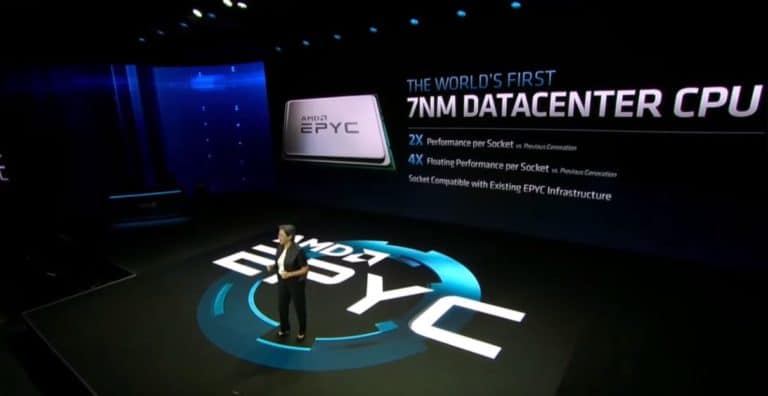AMD is a great eye catcher with its new Epyc Rome chips. The server chips will be widely available from Q3 2019 and will be embraced by Dell for its solid performance and a lower price point than competitor Intel. It triples the number of Epyc server configurations within the server portfolio.
Since the launch of the Ryzen chips, AMD has put itself back on the map. Desktop and laptop manufacturers are increasingly integrating this chip, but on the server side there is less of a storm. The Epyc chips with the Zen architecture are well appreciated, but Intel clearly remains the dominant player.
With the arrival of Epyc Rome on the Zen 2 architecture, it looks like AMD is at the door of a breakthrough. It is the first server chip to be baked at 7 nm (Intel is at 14 nm) and Zen 2 also embraces PCI Express 4.0. As it looks now, the Epyc Rome chips will have many more cores at the same price compared to Intel. The top model gets 64 cores and 128 threads in an innovative chiplet design.
More configurations
Dominique Vanhamme, EMEA VP at Dell, has informed IT Pro that AMD is doing well. We have about 50 platforms that we offer to customers today. Three of these are available today with an Epyc configuration. With the arrival of the new chips, we want to triple that number by the end of 2019.
That’s a radically different decision compared to last year when Dell CTO John Roese announced that AMD is working on interesting things, but that there is a giant dominant player who is calling the shots today. He acknowledged that AMD was engaged in innovative matters, but that the gap was still too large in terms of market share and number of use cases.
Big question
According to Vanhamme, the demand for Epyc Rome is much greater than expected. Initially, we thought of launching a few verticals, such as service providers. It now appears that general customers also want to work with AMD.
A good sign for AMD, but there is still a lot of work to be done in order to take on more market share. Every company has to validate its software on new processors and architectures before they can proceed to integration. More and more companies now believe that it’s worth the effort to make that investment, as they earn it back through cheaper hardware costs compared to Intel’s Xeon chips.
Related: AMD shows Epyc Rome with radical design and strong performance gains
